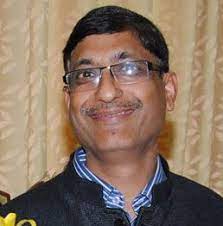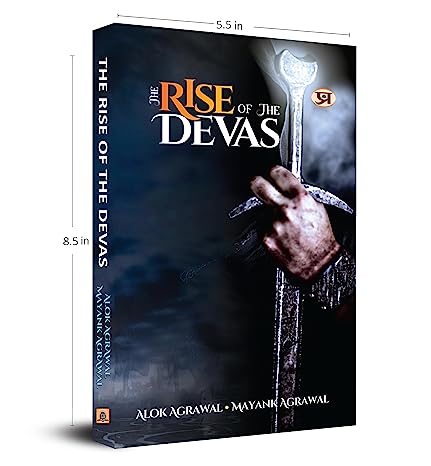Mayank Agrawal*
There is a visible trend among the modern Indian authors to pick themes from the ancient Indian literature and the popular legends, and present them differently with their own interpretation of the events of the past. A section of logicians while describes these legends as myths in the absence of tangible evidence, and for that matter considers even Ramayana and Mahabharata also in that category, for millions of others they are a matter of strong belief and actual happenings. In this age of science, our minds refuse to accept any narratives without evidence or reasonably acceptable logic. So, the new generation writers are invariably trying to find rationale behind the ancient stories while presenting their works. The positive side of this is that their efforts have led to renewed interest in our past in the minds of the young readers. “The Rise of the Devas”, jointly written by me with my elder brother is also an attempt to search explanation in the ancient legends which many people deny labelling them as “myth”.
The thoughts which led to writing this noveland its Hindi version “Devon ka Uday” have been explained in the beginning of the novel as “Note from the Authors”. We brothers had fertile environment at home itself with our father being an erudite Sanskrit scholar and our home being a ground of discussion for learned people. The ancient and the mystical always attracted us. As a child and after joining the government service, I got several opportunities to visit ancient forts, palaces, ruins and could feel that the vibes of the times, when they were alive and vibrant with the activity, still exist there, eager to tell us the stories that once belonged to our ancestors. So, is it not exciting to discover our past?
We the brothers quite often would have discussions and arguments on the legends related to the Suras, the Asuras, the Devas, the Devalok, Samudra Manthan and stories travelling down the generations around them. At the same time, certain facts, that a peace treaty was concluded between the Mitanni and Hittites rulers of the Anatolia (Asia Minor, now in Turkey), upper Mesopotamia and northern Syria regions, about 1400 BC, in the name of Vedic gods Indra, Varuna, Ashwin and Mithra; the influence of Sanskrit on the languages of the west; the similarities between the Rigveda and Avesta, these all indicate that Vedic knowledge spread far and wide from its land of origin that was definitely Aryavart. When we talk of spread of civilisations, a parallel with the movements of Aryans immediately comes in the mind. While our work is not on the veracity of the Aryan invasion theory, it infers that the superior knowledge once flowed from India to the other countries, and the Indian civilisation is still preserving that old knowledge, as no other region of the world. And all this have been narrated in a story telling format, not as a hard core research document.
We have considered the Suras or the Devas as the leading human race who had superior knowledge about nature. They established efficient control over natural resources such as metals – using them for utensils and weapons, domestication of cows and horses, developing agriculture, learning the medicinal properties of the plants, learning the movement of heavenly bodies- sun, moon and stars and so on. We considered their origin in the foothills of the Himalayas and they later spread and developed the first planned human civilisations from the Ganga to the Saraswati and the Sindhu regions. They were no different from humans is evidently clear from so many stories of the past. In the famous Nal & Damayanti story, Indra, Varuna, Agni and Yama, all Devas are so enticed by the beauty of Vidarbha king Bhim’s daughter Damayanti that they go to her Swayamvar to woo her. In another story Indra by deceit slept with Ahalya, the wife of Gautam Rishi. There are stories where the Devas have been shown to be in war with the ordinary kings. So, countless such legends establish the Devas being a race on the earth, though they should be highly knowledgeable, prosperous and controlling advance weapons, but also had weaknesses common to a human being. Indra, Varuna, Agni and so on seem to be the titles among the Suras or the Devas according to the status they enjoyed in the society.
Another important hypothesis of our work is that the Asuras were also a superior human race as much as the Suras, but due to their ideological differences with the Suras they were always at war with them. Knowing well that the civilisation can prosper only if the two superior powers of the Suras and the Asuras come together, Lord Vishnu, whose motto was “Vasudhaiv Kutumbukam” i.e. “the world is one family”, brought them together for jointly conducting the sea expedition, “Samudra Manthan”. However, the fights erupted between them on the finds of the expedition, particularly on possession of the Soma or Amrit, the nectar.
So, picking threads from the ancient legends and making a garland out of that is what the novel “The Rise of the Devas” and “Devon ka Uday “are. Imaginations are free flowing in the absence of any documented history of that period, and I would describe those imaginations as the flowers and petals of this garland giving it the ornamental beauty.
I was often asked a question that the novels are generally written by a single author as it is a highly creative work requiring assimilation of thoughts. For that to answer I want to say that I and my brother had perfect tuning on the overall plot and most of the sub-plots, though some differences cropped up for which we found logical solutions.
I am thankful to the readers for their very encouraging response to our work and the comments they have given. Many of these comments can be seen on the Amazon platform where both the books, “The Rise of the Devas” and “Devon ka Uday” are available at concessional price on these links of Amazon.
The book can also be obtained from the publisher, Prabhat Prakashan. Delhi. It is also available on various other online platforms.
I am sure that the readers will not only find this novel interesting and entertaining but it would also trigger in them the curiosity to dig into the ancient unknown world.
***

*Mayank Agarwal is a former civil servant who has served at various senior positions in the Government of India. Prior to his retirement, he has also worked as CEO Prasar Bharti and Principal Director General of Doordarshan News.



